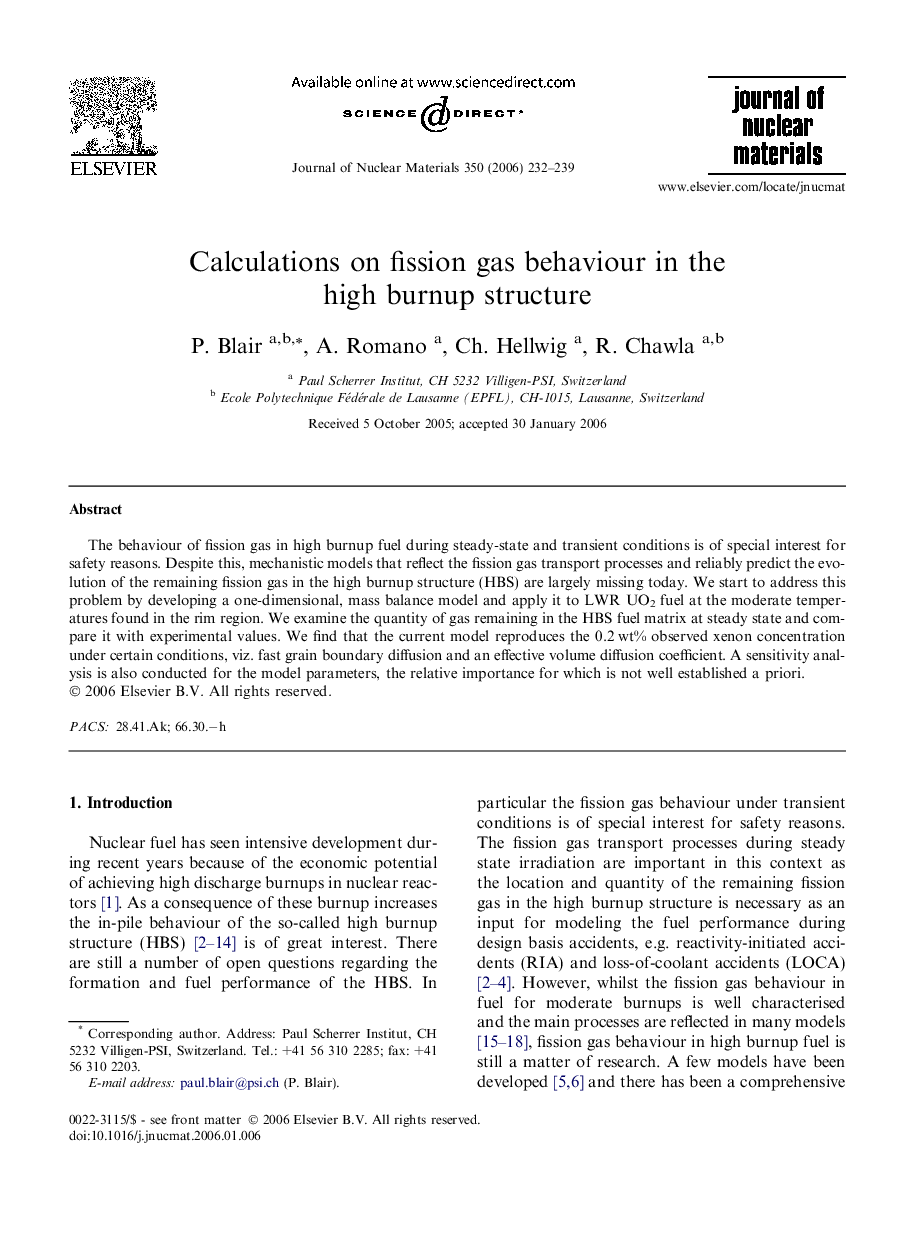| Article ID | Journal | Published Year | Pages | File Type |
|---|---|---|---|---|
| 1569819 | Journal of Nuclear Materials | 2006 | 8 Pages |
The behaviour of fission gas in high burnup fuel during steady-state and transient conditions is of special interest for safety reasons. Despite this, mechanistic models that reflect the fission gas transport processes and reliably predict the evolution of the remaining fission gas in the high burnup structure (HBS) are largely missing today. We start to address this problem by developing a one-dimensional, mass balance model and apply it to LWR UO2 fuel at the moderate temperatures found in the rim region. We examine the quantity of gas remaining in the HBS fuel matrix at steady state and compare it with experimental values. We find that the current model reproduces the 0.2 wt% observed xenon concentration under certain conditions, viz. fast grain boundary diffusion and an effective volume diffusion coefficient. A sensitivity analysis is also conducted for the model parameters, the relative importance for which is not well established a priori.
